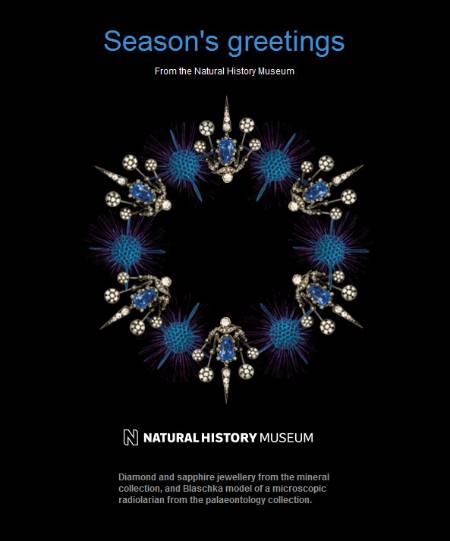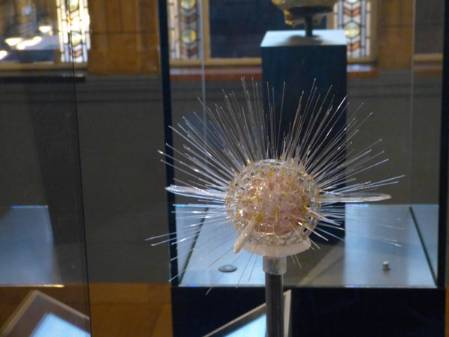On the 18th and 19th of November we welcomed over 150 micropalaeontologists who travelled from as far away as New Zealand for a conference at the Museum. Over 50 of them were given tours behind the scenes and 45 micropalaeontology posters were displayed. Thank you to fellow conference hosts and Museum scientists Tom Hill and Steve Stukins who have written this guest blog to describe the significance of these two busy days/weeks/months for micropalaeontology at the Museum:
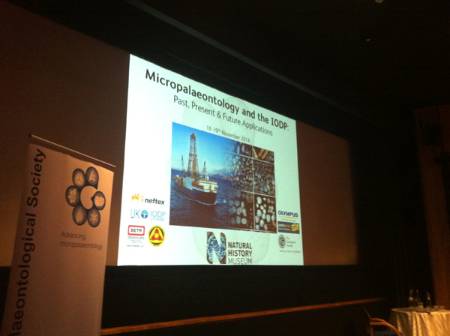
The stage set for the start of the micropalaeontology conference at the Museum
On Monday 18th and Tuesday 19th November 2013, the Micropalaeontology Unit hosted a conference at the Museum on behalf of The Micropalaeontological Society under the theme Micropalaeontology and the IODP: Past, Present and Future Applications. IODP stands for the International Ocean Drilling Programme and is an international marine research collaboration that explores Earth's history using ocean-going research platforms, for example the JOIDES Resolution research vessel. These platforms drill cores through the seafloor to recover the layers of sediment and rock that have accumulated at the bottom of the oceans.
The conference was a resounding success, with 150 delegates registering and contributing. We even had to close registration a couple of weeks beforehand as we reached capacity. The event included a number of keynote speakers who specialise in research on IOPD samples, numerous presentations and posters covering all aspects of micropalaeontology and tours behind the scenes.
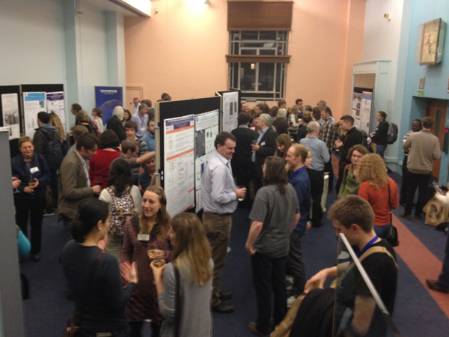
Conference delegates enjoying the poster session
Micropalaeontology is an integral part of IODP studies and as a result micropalaeontologists will be found on all IODP cruises. As the amount of sediment or rock extracted by coring is often relatively small, microfossils provide an ideal route through which scientists can:
- study the age of the sediment under investigation
- reveal the climatic conditions that prevailed at the time of sediment deposition
This is because hundreds, thousands, indeed millions of microfossils may be preserved in a layer of sediment only a few millimetres thick. As a result, micropalaeontology is at the forefront of IODP and climate change research.
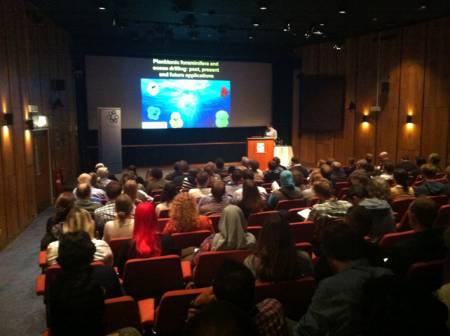
Keynote speaker Prof Bridget Wade from University College London
The international relevance and importance of micropalaeontology in ocean research was underlined by the fact that we hosted delegates from across the world including America, Canada, France, Germany, the Netherlands, New Zealand, Switzerland and Tunisia, to name a few. The diversity in delegates was complemented by the similar diversity in micropalaeontology projects that were discussed through both oral and poster presentations.
One of the research topics often discussed was how micropalaeontologists can extract detailed geochemical signals from microfossils to quantify past oceanic and climatic conditions. If such high resolution analysis is applied to an ocean core, it is then possible to reconstruct how oceanic conditions (which in turn reflect climate) have changed over millions of years. Such studies are essential if scientists are to understand how our Earth responds to climate change (whether it be due to natural or human-induced change).
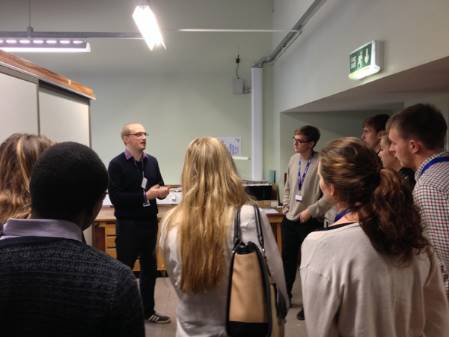 Steve Stukins demonstrating the John Williams Index of Palaeopalynology to a group of M.Sc. students studying Applied and Petroleum Micropalaeontology at the University of Birmingham
Steve Stukins demonstrating the John Williams Index of Palaeopalynology to a group of M.Sc. students studying Applied and Petroleum Micropalaeontology at the University of Birmingham
The conference also provided a unique opportunity to publicise the quality and quantity of the micropalaeontology collections housed at the Museum to a large specialist audience. Steve and Giles provided tours through the collections to over 50 micropalaeontologists including the new intake of MSc students studying micropalaeontology at Birmingham University.
Numerous new projects to work on our collections and potential new collaborations have resulted from these tours and from discussions we have had during the conference. From the feedback that we received, it seems that members of the Micropalaeontological Society also found the conference a great success. If you are interested to learn more details, the abstract volume for the TMS2013 talks is now available on-line.
The conference would not have been such a great success had it not been for the generosity of our sponsors. We would therefore like to thank The Micropalaeontological Society, The UK-IODP, The Geological Society, AASP – The Palynological Society, Neftex, Olympus, Petrostrat and Beta Analytic for their kind support during this event.



